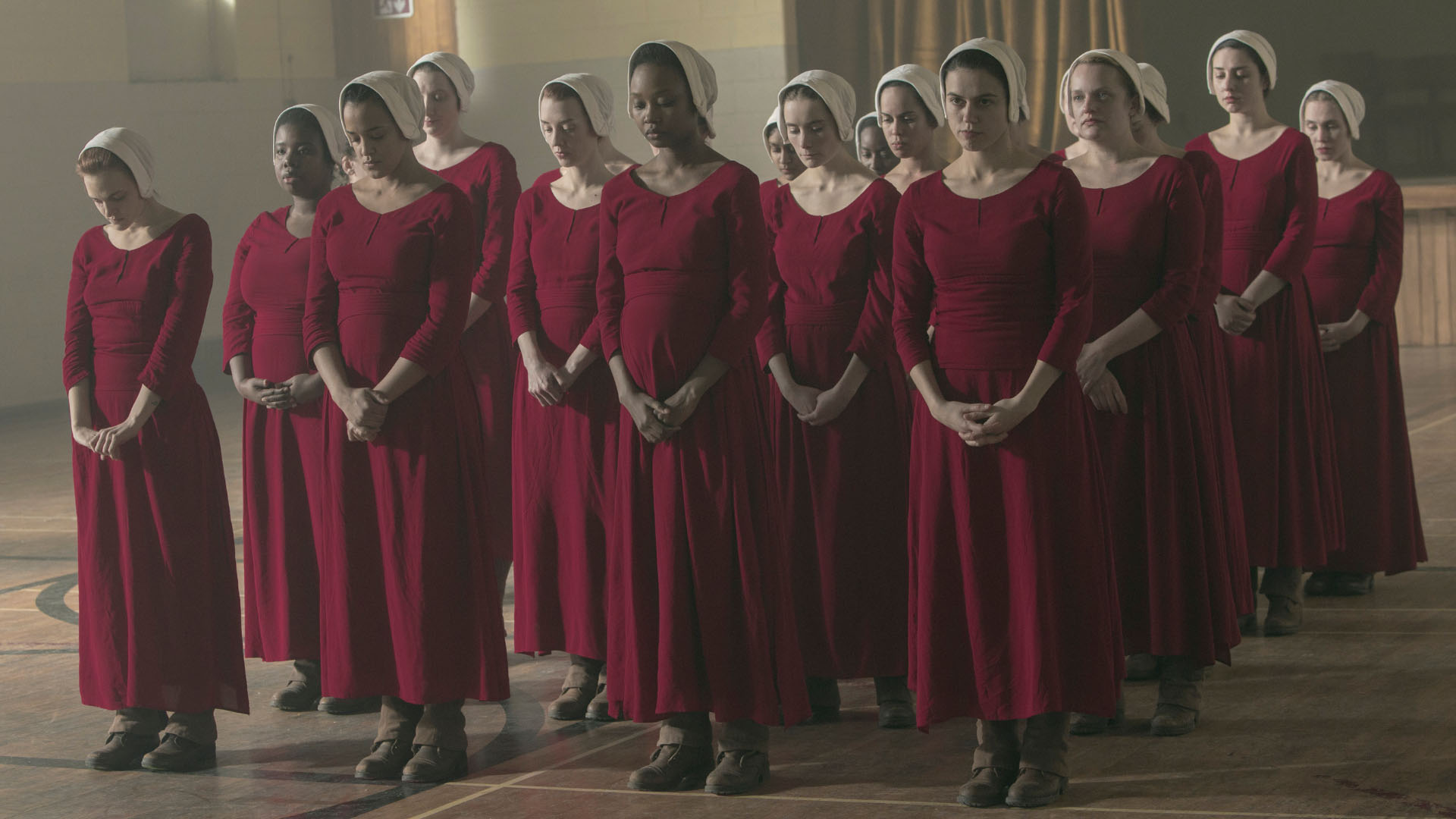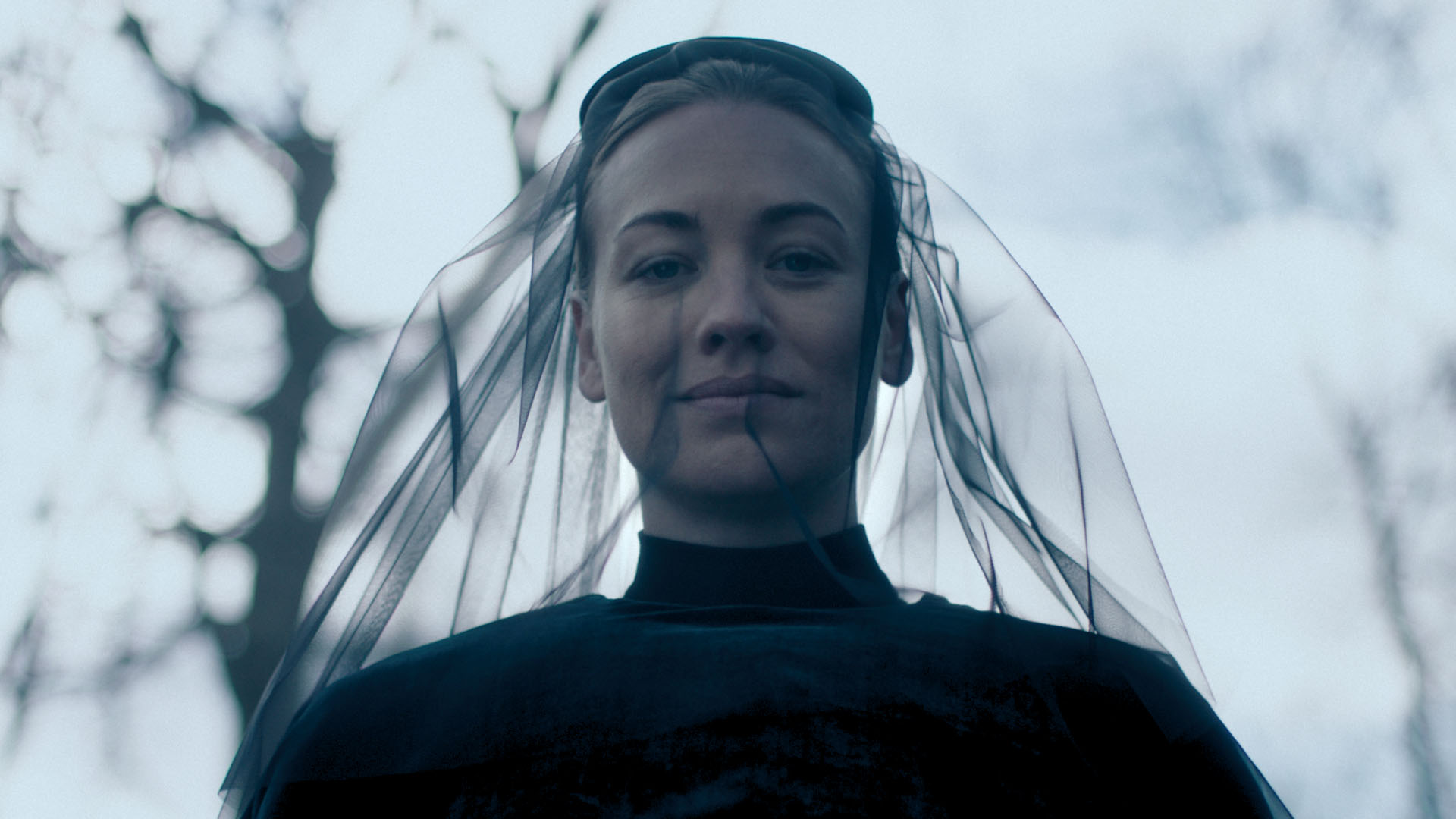The Handmaid’s Tale’s dystopian vision is already a reality for marginalised people

The scariest part of The Handmaid’s Tale is that it can’t be considered purely fiction. For marginalised people, as Laumata Lauano Volavola explains, not too far from their current reality.
The Handmaid's Tale: Season 5
If you’re unfamiliar with The Handmaid’s Tale, it tells the story of a United States in the near future, now called the Republic of Gilead. In this dystopian world, the government has been overthrown by an authoritarian, theocratic sect. In this totalitarian society, women are treated as property. Due to pollution, the majority of people are infertile, so Gilead enslaves fertile women who are classed as handmaids, assigning them to influential families where the husbands ritually rape them as the wives watch. If a handmaid conceives, the baby is taken from her to be raised by the father and his wife.
Season five picks up from the cathartic events at the end of season four. The season finale (spoilers to follow) saw its protagonist June (Elisabeth Moss) orchestrating the murder of her former abuser, Commander Fred Waterford (Joseph Fiennes), and putting his body on the dreaded wall. This comes after a season of June obviously suffering major PTSD from the harrowing years she endured in Gilead.
Oppression of women is embedded in American history
The oppression and sexual coercion of women have always been deep-seated truths in American history. Even before The Handmaid’s Tale was released in 2017 as a TV show, the 1985 Margaret Atwood novel it was adapted from already took inspiration from some of the darkest chapters of history (as the author has said many times).
It’s important to note that the Gilead in the novel is also entirely white; people of all other races, ethnicities, and religions have been exterminated, sent to unseen “colonies,” or forced to convert—something which the show has chosen to do away with. As Bruce Miller, who adapted the story for television, reasoned that “if the TV show itself is an all-white world, then you are making a racist TV show.”
Miller is staunch in the view that it was more interesting to have a world where fertility trumps everything, including race, employing a somewhat diverse cast. New York Magazine called the colourblind tone the show’s “greatest failing,” the inclusion of race without the depiction of racism.

The Handmaid’s Tale references and imagery are often brought up in conversations centred on reproductive justice because of the current state of affairs in America. Since the novel’s adaptation, the imagery of crimson caftans and white bonnets worn by the handmaids in the novel became fixtures at abortion rallies and marches in support of reproductive justice.
And conversations around anti-abortion were made even more controversial when on June 24, 2022, the US Supreme Court overturned Roe v. Wade, the landmark 1973 Supreme Court decision that affirmed the constitutional right to abortion. In the first month following the US Supreme Court’s decision to overturn Roe v. Wade, 11 states—all in the South and Midwest—had banned abortion completely or implemented a six-week ban. It really would appear that the imagined worst-case future depicted in The Handmaid’s Tale is at hand—but only as it relates to the white female, cisgender, non-disabled experience.
Marginalised people already experience a horrific reality
For many marginalised groups already struggling to access health care, including abortion, the horrors depicted are already a reality. To see the world depicted in The Handmaid’s Tale as a worst-case future is to ignore how the United States has controlled the reproductive rights of Native, Black, Latinx, incarcerated, disabled, and poor people in the past and present. And to turn a blind eye to the experiences of Black women under chattel slavery, women in poverty, immigrants, Indigenous people, LGBTQ people, children and others who are disproportionately at risk for sexual exploitation and abuse.
American sociologist, law professor, and social justice advocate Dorothy Roberts wrote about the atrocities Black women endured as slaves. In her 1997 book Killing the Black Body, she details slave women’s childbearing abilities being used to replenish the enslaved labour force:
“Black women bore children who belonged to the slave owner from the moment of their conception. This […] made control of reproduction a central aspect of whites’ subjugation of African people in America.” When the importation of new enslaved persons into the United States was outlawed in 1808, forced reproduction became even more critical to slave owners.
Today, pregnant people in the U.S. prison system (which many consider to be a direct extension of slavery) have little to no access to reproductive healthcare and are often forced to keep unwanted pregnancies. Studies show that, nationwide, even when an abortion is permitted, prison policies make the burden of accessing abortion care exponentially higher for an incarcerated person.

In addition to forced pregnancies and births, the U.S. government has also robbed tens of thousands of their fertility through forced sterilisation. In 1927, the Supreme Court case Buck v. Bell upheld a law that allowed Virginia to sterilise individuals it deemed “feebleminded.” During the Nuremberg trials, several Nazi leaders referenced this case as a justification for their own eugenicist crimes. Virginia repealed its sterilisation law in 1974, but as of today, Buck v. Bell has not been overturned. Indian Health Services’ history is full of forced or coerced sterilisation on Indigenous people, and between 1973 and 1976 alone, over 3000 American Indian women were sterilised without their permission. A study found that the Indian Health Service had “singled out full-blooded Indian women for sterilisation procedures.”
“Better never means better for everyone”
Few sayings from the show are as poignant for these parallels as one uttered by the commander to June—or Offred as she’s been renamed to reflect her belonging to him, literally being of Fred. “Better never means better for everyone,” he says. “It always means worse, for some.”
The commander’s worldview is all too common and as observers from outside of the U.S., you can see that the rich keep getting richer as the poor get poorer. The country is literally a byproduct of its coloniser history, born as the result of twin genocides. One of the indigenous peoples’ stolen land and another of stolen labour from Africa―the epitome of one group’s advancement at the expense of others.
It feels almost disingenuous to compare real-life events to a fictional story, but drawing these parallels serves to call out the problematic nature of only focusing on white cisgender, non-disabled women, thus disguising the most impacted people. That’s not to say The Handmaid’s Tale shouldn’t be watched but rather watch and be sure to educate ourselves and amplify the diverse stories of reproductive suppression and how it’s been disproportionately waged on marginalised child-carrying people.



















